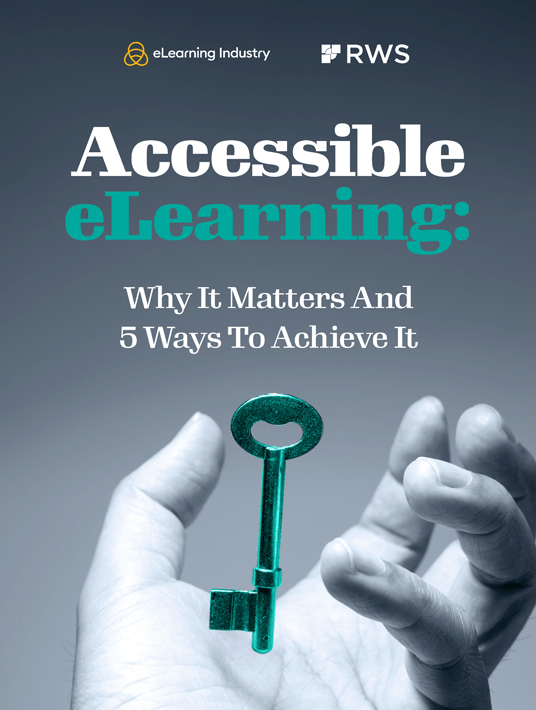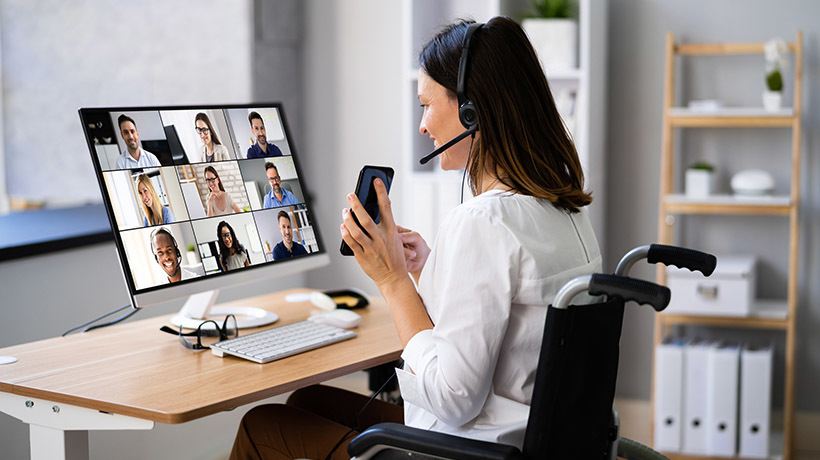Creating Accessible Courses That Break Down Barriers
Accessible courses ensure equal educational opportunities for learners with defined disabilities. But did you know that its standardization is actually beneficial for every learner? Designing eLearning content with accessibility standards in mind demonstrates an organization-wide commitment to fostering inclusion beyond mere regulatory compliance. You're not catering to a niche audience—you're removing barriers and establishing more inclusive and equitable learning experiences that are useful, usable, and meaningful to all learners.
Instead of paying attention to accessibility only in specific courses for a specific group of people, let's establish a more well-rounded approach that both follows legal guidelines and actively responds to ethical considerations. It's time to become intentional in creating learning content that eradicates discriminatory barriers and serves all learners.

What Happens When Courses Aren't Accessible?
When learning content isn't accessible, the ripple effect reaches the entire organization. From diminishing individual performance and obstructing skill acquisition to eroding the overall company culture and brand perception, overlooking accessibility has detrimental effects.
First of all, it is a legal requirement that organizations comply with regulatory frameworks such as the Americans with Disabilities Act (ADA), Section 508, WCAG (Web Content Accessibility Guidelines), and the imminent European Accessibility Act (EAA) of 2025. These frameworks set foundational expectations across sectors, concerning the creation, delivery, and availability of accessible digital content and technology among people with disabilities. They mandate equal access, robust and streamlined content, and compatibility with current and future assistive technologies. Noncompliance brings major legal repercussions.
But beyond compliance, the creation and delivery of eLearning content that doesn't account for accessibility is simply ineffective in achieving its purpose. If your training is mandatory, then shouldn't it address your audience's needs? If you offer learning as a product, shouldn't you account that a significant percentage of your potential clients worldwide are living with a disability?
Furthermore, ignoring the foundational importance of accessible learning also brings ethical risks. Apart from endangering your profits and reputation, you are reinforcing barriers to equality and inclusion. Equal access to education is a foundational human right and a cornerstone of building a universally accessible learning landscape. So, isn't it something we should all strive for?
How Accessible Courses Benefit Everyone
Accessible eLearning design allows learners of all abilities to fully and comfortably engage with learning materials and resources. An accessible course caters to not just people with defined disabilities but also learners with temporary limitations, such as injuries or working in low-light or loud environments, those with limited digital literacy, or busy professionals on the go. They benefit everyone.
Here's what you and your learners gain when you invest in accessibility.
1. Equal Access
Maintaining accessibility standards broadens the reach of L&D initiatives and supports more employees. An inclusive approach to learning increases the training's scope and dismantles barriers to professional development by making it available to more people. This encourages participation, especially from learners from previously excluded or underserved groups.
2. Ease Of Use
Thoughtful design should influence the construction of all your materials to ensure that every user can comfortably navigate and consume your content, whether they use assistive technologies or not. By enhancing the user experience through accessibility standards, learning can serve its intended purpose and reach a greater number of learners, without risking withdrawal or exclusion from the learning process.
3. Accommodating Various Needs
When designed with accessibility in mind, learning materials accommodate various learning needs and encourage engagement from learners of all abilities. By addressing these needs from the get-go, not only do employees feel more empowered in their journeys, but also become more engaged, making training more impactful and applicable.
4. Right To Education
Accessible eLearning allows employees to harness their fundamental right to learn and grow without barriers. By providing learning opportunities designed to be accessible to all—not just a select group—organizations establish a socially responsible, ethical, and more inclusive culture in which their employees thrive.
5. Innovation
Accessible learning opportunities broaden your organization's capacity to innovate by cultivating internal expertise and encouraging diverse perspectives and pioneering solutions. With a workforce drawing from meaningful and inclusive learning experiences, exploration and experimentation become an irreplaceable part of a company's identity and allow more employees to tap into their innate creativity.
Conclusion
Accessible eLearning design benefits learners with disabilities as well as all learners. It is a powerful strategy that enhances the learning experience for everyone, and an imperative that drives the creation of equitable and inclusive learning spaces where everyone's potential is harnessed to its fullest extent.
Download Accessible eLearning: Why It Matters And 5 Ways To Achieve It today to uncover more tips on how to address accessibility and ensure that all learners can fully engage with the material and participate in the learning process.









